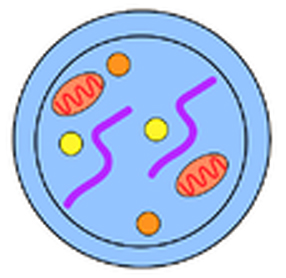Themed Curation Project

Autophagy
Autophagy is the process whereby cellular components are engulfed in double-membrane vesicles and delivered to lysosomes for degradation and recycling of macromolecular constituents. Autophagy is implicated in a plethora of major disease states that span neurodegeneration, infection and immunity, cardiac and pulmonary vascular disease, cancer and aging. The engulfment of cytoplasmic material, termed macroautophagy (often simply referred to as autophagy), is triggered by amino acid or growth factor depletion, hypoxia, reactive oxygen species, reduced energy balance and other stimuli. A distinct process called microautophagy encapsulates cytoplasmic components through direct invagination of endosomal or lysosomal membranes. A further process termed chaperone-mediated autophagy directly transports soluble substrate proteins into the lysosomal lumen. Different variations of autophagy target protein aggregates (aggrephagy), defective organelles including mitochondria (mitophagy), the nucleus (nucleophagy), the endoplasmic reticulum (reticulophagy), the 26S proteasome (proteaphagy), the peroxisome (pexophagy), the ribosome (ribophagy), and internalized pathogens (xenophagy), amongst other intracellular components. A network of regulated protein interactions channel a multitude of substrates to different autophagic fates. Macroautophagy depends on two conjugation systems based on two ubiquitin-like modifiers, ATG12 and ATG8, first discovered in yeast, corresponding to ATG12 and a family of 8 different LC3/GABARAP proteins in humans. Formation of the phagophore, the cup-shaped membrane structure that surrounds the nascent cargo, is initiated by the ULK1 kinase complex, followed by recruitment of PI3KC3/VPS34 to membranes, and generation of lipidated LC3 or GABARAP that drive membrane extension/closure and recruitment of substrates via specific adaptor proteins. Once the phagophore is sealed, kinesin motor proteins deliver the autophagosome to the lysosome. In contrast, microautophagy and chaperone mediated autophagy rely on distinct protein effector networks. BioGRID curators have initially focused on protein interactions implicated in macroautophagy. This curation effort will be expanded to other forms of autophagy and extensive interactions with the ubiquitin-proteasome and protein chaperone systems. This project page allows users to query protein interactions, post-translational modifications (PTMs) and chemical interactions of the vast autophagy network.
The Autophagy curation project is on-going and will be updated each month. If you notice errors or missing interactions/publications in this dataset, or otherwise wish to contribute to this project, please contact us at support@thebiogrid.org. All Autophagy database records are freely available for download from links within this project.